Keynote Speakers
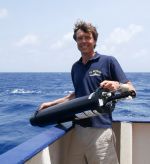
GEOMAR Helmholtz Centre for Ocean Research Kiel and Kiel University
Homepage: Link
Opening lecture: The Future of the Ocean – Challenges and Opportunities for Humanity
International cooperation in science and effective local, regional and global governance are required to protect the marine environment and promote the sustainable use of marine resources to preserve an ‘healthy’ and productive ocean to keep delivering fundamental ocean services to meet the needs of future generations. Some of the global challenges such as food security, marine community health, and material and energy supply require more science from discovery and sustained ocean observations to understanding and the development of scenarios and predictions. This information needs to be assessed and recommendations for development pathways given. We need both a better understanding of ocean change and its challenges as well as more knowledge about new opportunities in order to develop towards a more sustainable relationship between humans and the ocean.

Stockholm University, Department of Ecology, Environment and Plant Sciences
Homepage: Link
Lecture title: Remembering Fredrik Wulff — Baltic Sea ecosystem modeller, institution leader and creator of the Baltic Sea eutrophication management decision support system.
Fredrik grew up in Kalmar, on the coast of the Baltic proper, where he developed an interest in Nature and the Sea. He studied zoology and botany at Stockholm University and began doctoral studies on rock pool ecosystems at Stockholm University’s Baltic Sea field station, the Askö Laboratory. When his advisor, Bengt-Owe Jansson, received a ten-year grant to study Baltic ecosystems, with the long-term goal of creating mathematical models for managing the Baltic Sea environment, Fredrik was made assistant project leader and sent to study ecosystem modelling with the famous systems ecologist Howard T. Odum at the University of North Carolina. On return, Fredrik was a major contributor to the success of the project, got his doctoral degree in 1978, and became a docent the year after.
In the 1980-ies, Fredrik gained international respect, and spent a fruitful half a year with John Field in Cape Town. His joint papers with oceanographer Anders Stigebrandt in Gothenburg made a break-through in ecosystem analysis of the Baltic Sea. In 1991-2002 Fredrik was head of Stockholm University’s Department of Systems Ecology. He received major grants for studies of large-scale ecological processes in the Baltic Sea, and assembled a large data base to support the modelling. He published books on marine ecosystem analysis and Baltic Sea ecology and became Professor of Marine Systems Ecology in 1996. In 1998 he received the Great Prize of The Åland Foundation for the Future of the Baltic Sea.
From 1999 Fredrik led the project “Marine research on Eutrophication”, MARE, funded by the Swedish Foundation for Strategic Environmental Research. Through international collaboration, MARE created a series of linked models that describe how different actions to mitigate eutrophication influence the Baltic Sea’s ecology and fish stocks, and at what cost. When the Helsinki Commission used this decision support system for its Baltic Sea Action Plan, this was the crowning of 37 years of unrelenting, inspired work by Fredrik. After the MARE project, the research has continued and expanded at the Baltic Nest Institute, now part of Stockholm University’s Baltic Sea Centre. After retiring in 2009, Fredrik continued to act as a trusted advisor. His influence on Baltic Sea environmental management is unequalled.
Prof. Dr. Maren Voß
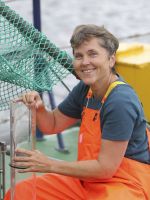
Leibniz Institute for Baltic Sea Research Warnemünde
Homepage: Link
Lecture title: Continuum and gradients: what are the linkages of nutrient cycles in the Baltic Sea
A major feature of the Baltic Sea is of course the gradient from the Kattegat to the Baltic Proper and further on into the Gulf of Finland and Bothnian Bay. Likewise important is the differentiation between the coastal zone and the offshore deep basins. The latter feature an entirely different suite of biogeochemical processes largely driven by the oxic-anoxic interface. In which way coastal zones and the off-shore basins are linked and how nutrient cycling differ has remained rather unclear. A major question is whether the coastal zones are sources or sinks for the nutrients delivered to the Baltic Sea from the catchments. Composition and turnover of organic and inorganic compounds depend on the land use and other human activities. Organic material is most abundant in rivers from northern Swedish catchments but inorganic nutrients dominate the input via the major southern rivers. Observations suggest that all dissolved substances are transported alongshore while they undergo substantial turnover especially through closely linked water-sediment coupled processes. Since the heterogeneity of coastal zones around the Baltic Sea is high and input and removal likewise variable, depending on the residence time of waters, oxygen concentration, sediment characteristics and other factors, it is be difficult to define typical scenarios of nutrient turnover and removal.
In this lecture we will present key results from the past years including data from past and ongoing BONUS projects like AMBER, COCOA and others. A major focus will be on the cycling and microbial processes impacting the nitrogen and phosphorus cycles. Removal versus transport processes of characteristic coastal sites will be presented along with conceptual thoughts on the importance of individual processes. How the coastal nutrient cycles are then connected to the central basins will be evaluated. Finally we will speculate on how climate change can impact the processes and which consequences human pressure will unfold on the Baltic Sea ecosystem.
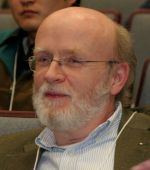
Alfred Wegener Institute, Helmholtz Centre for Polar and Marine Research
Homepage: Link
Lecture title: Climate change impacts on ocean biology: physiological underpinnings, projections and uncertainties
Prof. Dr. Byron Crump

Oregon State University, College of Earth, Ocean, and Atmospheric Sciences
Homepage: Link
Lecture title: Estuaries as bioreactors: transdisciplinary research on the Columbia River estuary
Prof. Dr. Caroline Slomp
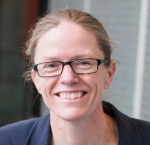
Utrecht University, Faculty of Geosciences
Homepage: Link
Lecture title: Hypoxia in the Baltic Sea: past, present and future
This talk will discuss what is known about the expansion of low oxygen conditions in the Baltic Sea over the past century. The results will be placed in a historical context using sediment records showing two previous intervals of hypoxia in the Baltic Sea during the past 8000 years. I will show, for example, that the onset of the modern interval of hypoxia was much faster than that of previous hypoxic intervals. In addition, I will present geochemical evidence for more intense and more widespread hypoxia in the modern Baltic Sea than in the past. This highlights the role of anthropogenic nutrients during the modern event. I will also discuss recent insights in differences between the development of hypoxia in coastal and open sea areas and possible future scenarios for changes in hypoxia in the Baltic Sea.
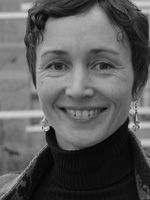
University of Bremen & Leibniz Center for Tropical Marine Ecology, Department of Social Sciences
Homepage: Link
Lecture title: Epistemic mobilities, sealevel rise and the contestation of the ocean-land borderline
This keynote address the patterns of cross-border epistemic mobilities in and between the cities of Singapore, Jakarta and Manila (Southeast Asia), in the context of regional sea level change and growing flood risks. It looks at (a) the policies and institutional infrastructures of risk adaptation (dispositifs, e.g. the formulation and institutionalisation of flood management plans) and (b) the related practices in the form of solutions and attempts of standardisation put forth by donor and civil society organisations (e.g. the construction of seawalls). It is hypothesised that epistemic mobilities and thus the globally communicated and locally heard disaster mitigation and risk adaptation plans and practices, are key to assessing the local processes of renegotiating the borderline between ocean and land through the employment of policies and practices of risk mitigation and adaptation. The contribution will be based on qualitative ethnographic data collected in 2016 in the three study sites on policies and practices of mitigating and adapting to sealevel rise.

